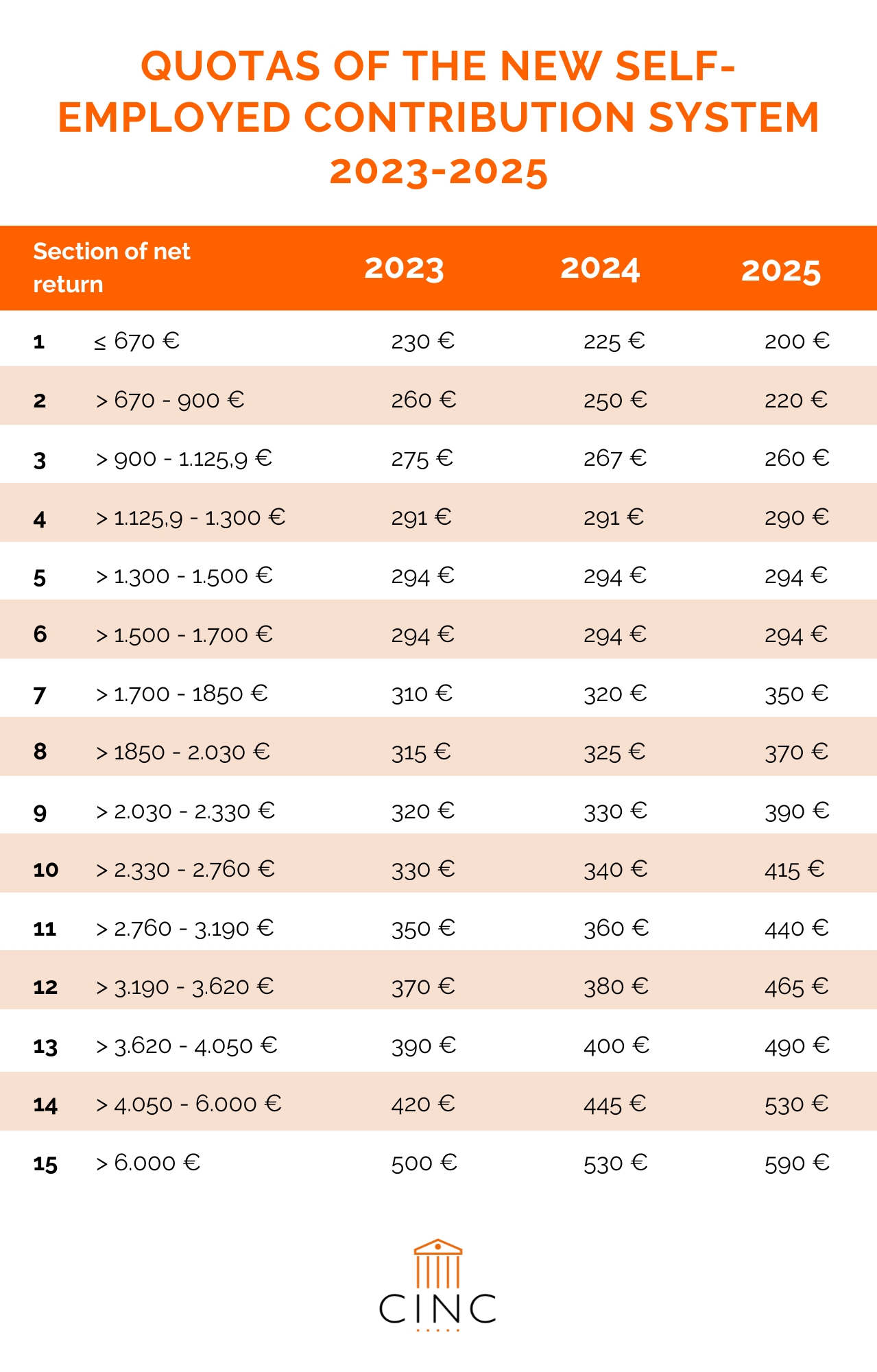New contributions for the self-employed: a new system based on real income has been approved
- 26 July 2022
- Business Consultancy

The Cabinet of Ministers has approved Decree-Law 13/2022, of 26 July, which establishes a new contribution system for the self-employed with a transitional implementation period from 2023 to 2025. In this way, the reform of the RETA (self-employed workers) will establish a contribution system based on real income.
The new system, which will start to operate from next January, consists of a progressive change between 2023 and 2025, whereby the self-employed will start to pay contributions based on what they earn, as salaried workers do, with a minimum contribution that will be gradually reduced (€230 in 2023, €225 in 2024 and €200 in 2025).
As regards the highest contribution for 2023, it is set at €500 per month, which will correspond to self-employed workers with a net monthly income of more than €6,000. For 2024, this will be €530, and for 2025, €590.
Below is a summary of how the self-employed contributions per year and per contribution bracket will look:

What are the keys to the new RETA contribution system?
- Between the minimum and maximum contribution, there will be a total of 15 brackets, depending on net income.
- The self-employed will be able to change their contribution base every two months, instead of every four months as before.
- A reduced contribution will also be maintained for all self-employed workers (€80) who start a self-employed activity for one year, extendable to 12 months, more if it is proven that the income has been lower than the Minimum Interprofessional Wage.
- The contribution ceiling for the over-47s disappears. From 2023, the contribution limit for workers over the age of 47 will disappear, as under the new system the condition will be that their income must prove that they are in the correct contribution bracket.
- Social Security will not be exempt from the new reform, but will also be monitoring the evolution of payments and contributions.
- This new regularisation procedure will be carried out every year so that Social Security and the Tax Agency will be in contact with each other to know the real income of self-employed workers and to regularise contributions.
- The figure for the part-time self-employed is eliminated: with the creation of the new system of contributions based on real income, the part-time self-employed disappears.
- New benefit for partial cessation of activity: it will be possible to receive a benefit from four months to two years, without the need to register with the RETA and without the need to close the business. The administrative authority will be responsible for the contribution during the period of receipt of the economic benefits for cessation of activity. The benefit will be 50% of the regulatory base compatible with another activity. To be eligible, it will be necessary to have a 75% reduction in the level of sales or income when there are no workers, or this same condition for two quarters, income no higher than the Minimum Interprofessional Wage and a reduction in working hours or suspension of contracts of 60% of the workforce if there are dependent workers.

